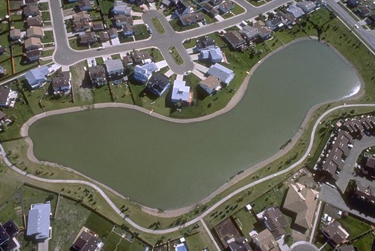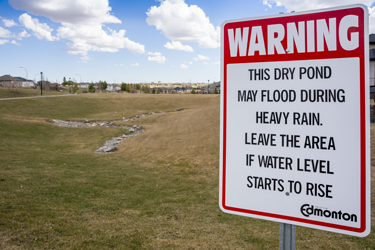The main purpose of the storm sewer system is to drain surface water and prevent flooding. The storm sewer system collects surface water into underground pipes and conveys it to a surface watercourse, lake, ravine or the river via 225 outfalls located throughout the city.
In newer neighborhoods, water flow is controlled by more than 190 stormwater management lakes. These lakes also enhance the quality of the water prior to discharge through the natural settlement of dirt and other material that may be in the water.
Storm sewer specifications
Stormwater management facilities
Operating as holding pools for stormwater, these facilities serve to:
- Collect neighborhood stormwater run-off
- Improve water quality by allowing sediments to drop out of the water
- Drain to a storm outfall
- Service land economically by storing peak flows and allowing small outlet pipes to be used instead of very large pipes

Dry ponds
Dry ponds also act as catch basins for excess stormwater during heavy rainfalls, but are otherwise empty.

